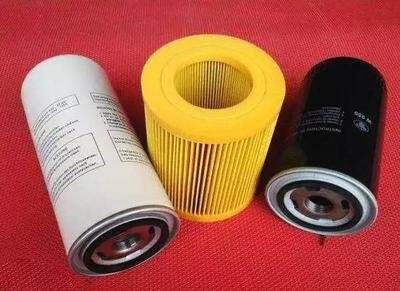The difference between automotive oil filter and fuel filter
The difference between automotive oil filter and fuel filter
In the complex mechanical system of automobiles, the oil filter and fuel filter are two crucial components that each undertake different tasks, jointly ensuring the efficient and stable operation of the engine. Although both belong to the category of filters, there are significant differences between them in terms of design, function, location, and replacement cycle. This article will delve into the differences between automotive oil filters and fuel filters from these aspects.

Design principles and functional differences
The original intention of designing an oil filter is to filter impurities and particulate matter from engine oil, prevent them from entering the engine's lubrication system, and thus protect the moving parts inside the engine from wear and tear. When the engine oil circulates in the engine, it carries pollutants such as metal debris, dust, and sludge. If these pollutants are not removed in time, they will accelerate the wear of engine parts and shorten the engine life. Oil filters usually use paper or metal mesh filters to trap impurities in the engine oil through physical barriers, ensuring that the oil entering various components of the engine remains clean.
In contrast, the function of a fuel filter is to filter the fuel entering the engine's fuel system, removing moisture, impurities, gum, etc., to ensure the purity and combustion efficiency of the fuel. The fuel filter is crucial in preventing nozzle blockage, poor fuel supply, and damage to the fuel pump in the fuel system. The fuel filter also adopts a filter element structure, but the material may be more refined to adapt to the chemical characteristics of the fuel and high-pressure working environment. Some fuel filters also integrate moisture separation function to ensure that there is no moisture in the fuel, avoiding the occurrence of engine "water flooding" phenomenon.

Location and installation method
The oil filter is usually located at the end of the engine oil circulation system, near the outlet of the oil pump, to ensure that the oil flows through various lubrication points of the engine, is purified by the filter, and then returns to the oil pan. The installation position of the oil filter is relatively fixed, making it easy to replace and maintain regularly. Depending on the vehicle model, the oil filter may be rotary, clamp, or threaded. When replacing it, follow the instructions in the vehicle manual.
The position of the fuel filter is relatively diverse, depending on the layout of the fuel system. For gasoline vehicles, the fuel filter may be located inside the fuel tank (internal type) or outside the fuel tank, in the fuel line between the fuel pump and the engine (external type). The fuel filter of diesel vehicles is often more complex because diesel contains more impurities and requires multi-stage filtration. Therefore, the diesel filter may include a coarse filter and a fine filter, located at the outlet of the fuel tank and before the engine inlet, respectively. The replacement of fuel filters usually involves dismantling the fuel lines, and caution should be exercised to avoid fuel leakage.
Replacement cycle and maintenance
The replacement cycle of the oil filter is usually consistent with the oil change cycle, depending on the vehicle's usage and oil quality. Generally speaking, the replacement cycle for mineral engine oil and oil filters is 5000 to 7500 kilometers, for semi synthetic engine oil and oil filters it is 7500 to 10000 kilometers, and for fully synthetic engine oil and oil filters it can be extended to 10000 to 15000 kilometers. In harsh driving conditions, such as dusty roads or high temperature environments, the replacement cycle should be appropriately shortened.
The replacement cycle of fuel filters is relatively long, and it is usually recommended to replace them when the vehicle has been driven for 20000 to 40000 kilometers, depending on the fuel quality and the manufacturer's recommendations. The replacement cycle of fuel filters in diesel vehicles may be shorter because diesel contains more impurities, which puts a heavier burden on the filters. It is worth noting that if the fuel filter is not replaced for a long time, it may cause blockages in the fuel system, affect engine performance, and even lead to malfunctions.

Technological development trends
With the continuous advancement of automotive technology, oil filters and fuel filters are also developing towards higher efficiency and intelligence. For example, some high-end car models have started to adopt long-lasting oil filters, which can be improved in filter material and structure to extend replacement cycles and reduce maintenance costs. At the same time, the development of intelligent filter technology is also underway, aiming to monitor the working status of the filter in real time through sensors, remind car owners to replace it in a timely manner, and avoid the risk of filter blockage.
epilogue
In summary, although both automotive oil filters and fuel filters are filters, there are significant differences in design principles, functions, positions, replacement cycles, and technological development trends. As a car owner, understanding these differences and strictly following the manufacturer's recommendations for filter replacement and maintenance is key to ensuring efficient and stable engine operation and extending the lifespan of the vehicle. Through scientific and reasonable maintenance, car owners can not only improve their driving experience, but also effectively reduce maintenance costs, achieving dual benefits of economy and environmental protection.

 EN
EN







































